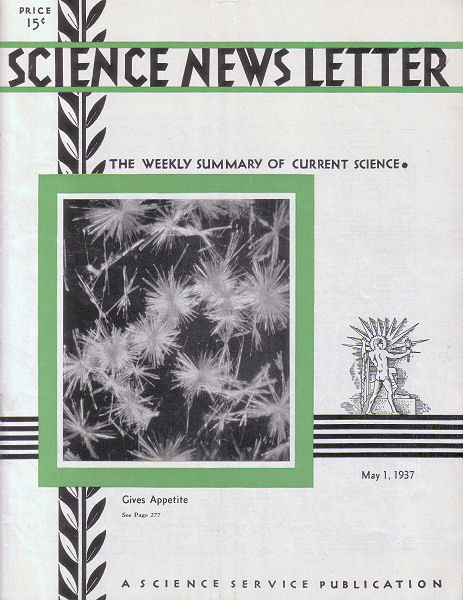From the May 1, 1937, issue

OBTAIN RARE PHOTOGRAPH OF VITAMIN B1 CRYSTALS
Did you ever see a vitamin?
Of course, they don’t really look like the alphabet letters in soup, but did you picture them in your mind as anything like the one shown on the cover of this week’s Science News Letter?
In that rare photograph is shown vitamin B1, the one found in whole cereals, green vegetables, fruit, milk, and yeast, lack of which causes nervous and intestinal malfunctions and loss of appetite and weight.